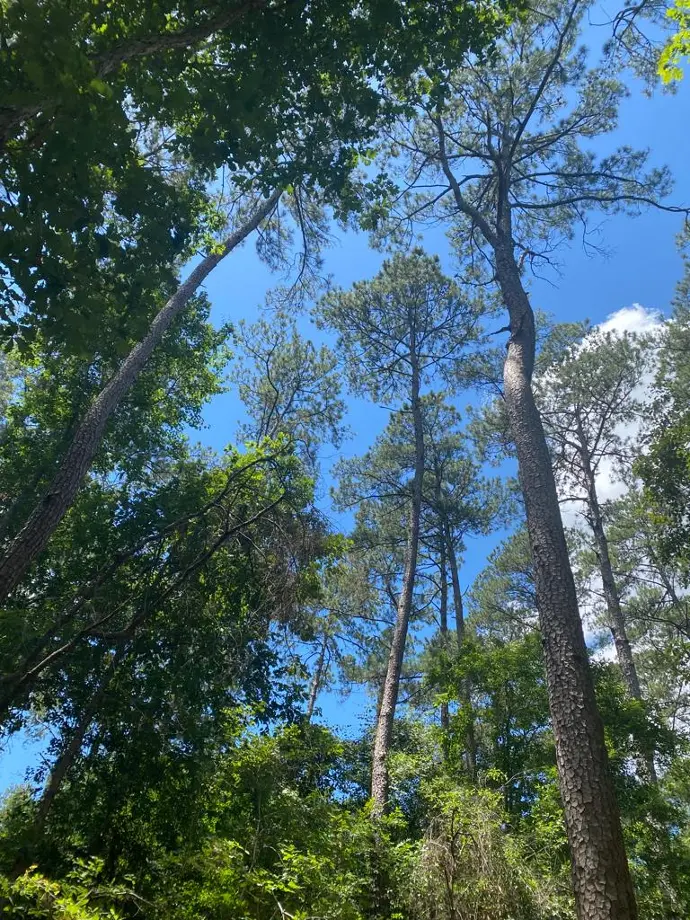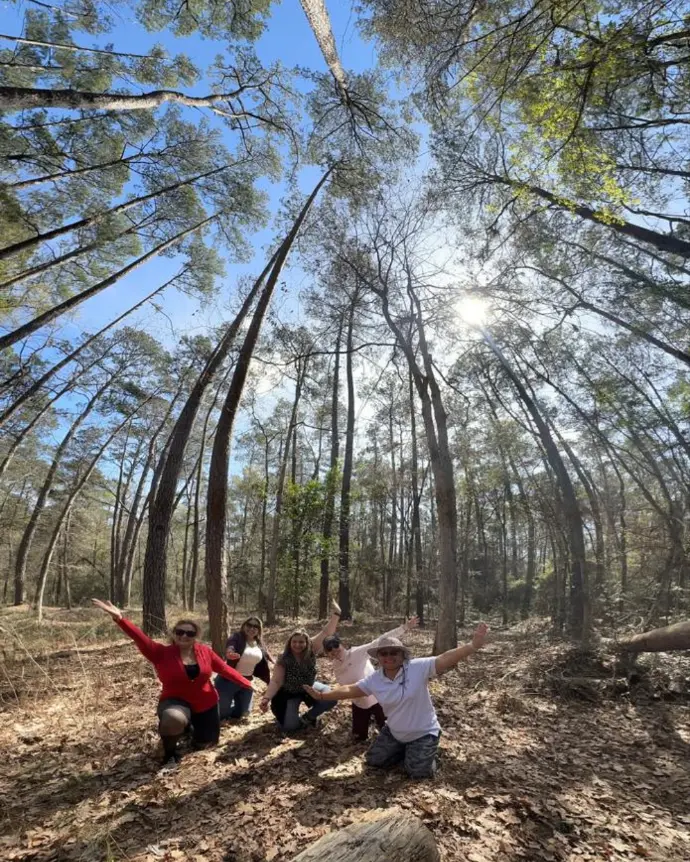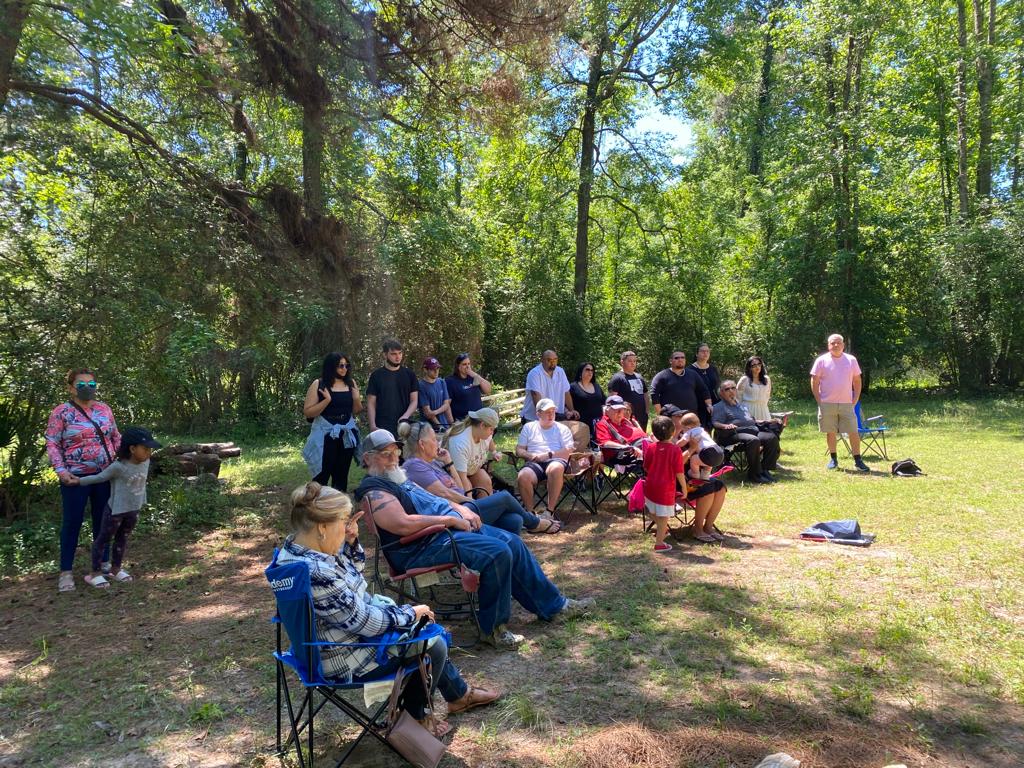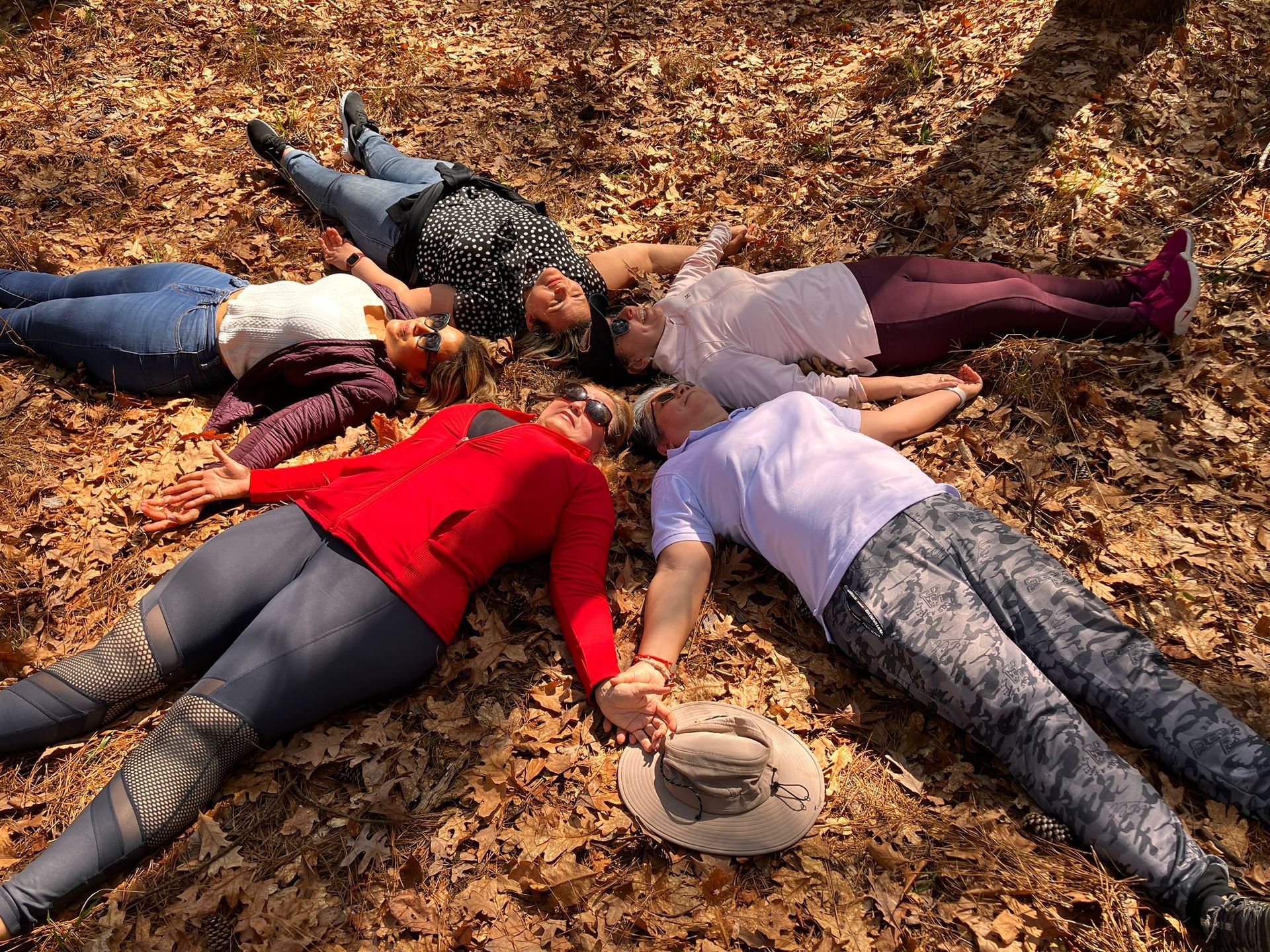
Our first Forest
In 2021, I had the privilege of taking my first state forest therapy hike, specifically at the WG Jones State Forest in Conroe. This experience was truly transformative, allowing me to connect deeply with nature and experience its therapeutic benefits firsthand.
I want to express my sincere gratitude to Paola Silva, who guided us with wisdom and passion, providing us with the tools and inspiration necessary to embark on our path as forest therapy guides. Her dedication and commitment to this practice were critical to our learning and growth, and I will always be grateful for her loving and expert guidance. Also to my friend Glenda Amaya who was the author of initiating this transformative process.
El WG JonesThe WG Jones State Forest is surrounded by the cities of Conroe, The Woodlands, and Montgomery County.
It is one of the largest operational urban forests in the country, 1,722 acres. Its original name was State Forest #2. The W.G. Jones State Forest is an operational forest owned and managed by the Texas A&M Forest Service.s
The forest was purchased in 1926. The main purpose of this forest is education resources. A solid scientific forest management is practiced that protects and perpetuates the native flora and fauna. Demonstration and research areas have been set up to test various forest management techniques, forest genetics, and studies on the use of forest products.
The location of the forest and its special ecological distinction make it one of the unique resources of the region for showcasing research and demonstration in urban forestry, environmental education, atmospheric studies, and a range of other opportunities with the leaders of tomorrow, improving the health of communities and connections with outdoor nature, and connecting the human world with the benefits of natural resource conservation through the forest.
In a ceremony on May 19, 1949, the forest was formally dedicated and renamed as the William Goodrich Jones State Forest, in honor of the Father of Forestry in Texas, Mr. W. Goodrich Jones.
In the year 1888, W. Goodrich Jones began his lifelong crusade to bring conservation to the Lone Star State when he moved to Temple, Texas. Jones remembered that "not a single tree was in sight" and decided to do something about it.
The WG Jones State Forest is known for its rich biodiversity and variety of flora and fauna. Among the flora species that can be found in this forest, trees such as loblolly pine, water oak, bald cypress, and black poplar stand out. The forest is mainly a mix of native pines and shortleaf pines, approximately 60% and 40% respectively. However, native hardwood species like white and red oaks are interspersed among the pine forest, providing habitat diversity. It is also common to see a variety of shrubs and plants such as Virginia heath, Virginia creeper, and white poplar.
Regarding fauna, the forest is home to a great diversity of wildlife. Among mammals, white-tailed deer, raccoons, armadillos, gray foxes, and weasels can be spotted. Additionally, the forest is home to numerous bird species, including woodpeckers, eastern bluebirds, hawks, owls, and a variety of migratory birds that pass through the area during certain times of the year. Reptiles and amphibians such as rattlesnakes, turtles, lizards, and frogs can also be found.
Prescribed fire is a forest management tool used to help maintain the critical habitat of the red-cockaded woodpecker.
Best Management Practices were initiated in 1990 to establish demonstration areas for protecting water quality from nonpoint source pollution. Forest practices such as mulching, thinning, harvesting, and prescribed burning are for the sustainable management of the critical habitat of the red-cockaded woodpecker.
The main purpose of this forest is resource education. Scientific forest management is practiced. Demonstration and research areas have been established to test various forest management techniques.
The WG Jones forest is an exceptional natural environment that provides the perfect setting for forest therapy. Located near the forest's administrative area, this place combines the beauty of nature with the tranquility necessary for healing and well-being.
Forest therapy, also known as shinrin-yoku or forest bathing, involves immersing oneself in nature consciously and sensorially to improve mental and physical health. In the WG Jones forest, participants can enjoy a serene and harmonious environment, close to the city and surrounded by native trees, flora, and fauna.
Well-maintained trails and areas chosen by the certified forest therapy guide for practice in the WG Jones forest allow participants to connect with nature, reduce stress, improve concentration, and promote relaxation. Additionally, the proximity to the forest's administrative area provides a sense of security and comfort during therapeutic sessions.The WG Jones forest is the ideal place for forest therapy practice due to its privileged natural environment, accessibility, and ability to provide a space for healing and connection with nature that protects and perpetuates native flora and fauna.


